D
Deleted member 4362
⠀ ⠀
- Joined
- Dec 15, 2019
- Posts
- 31,008
- Reputation
- 36,278
The diagnosis of Asperger's syndrome is/was dependent on the subject meeting the criteria for a certain level of autistic symptoms such as social deficits and obsessive interests while having an IQ] in the normal range or higher and not experiencing any developmental delay in language acquisition.
People with Asperger's often experience difficulty socializing and blending in with normies, apparently due to being bad with emotional recognition and expression, the condition sometimes being co-morbid or conflated with prosopagnosia (face-blindness).
On the other hand, they are often exceptionally good at recognizing patterns and investigating specific topics with intense focus (hyperfocus). People with ASD are also vulnerable targets of PUA who scam them into buying into their ineffective programs, with Aspies being particularly susceptible tothe ‘attraction ambiguity problem’.
However, he did defend autistics (such as many of his patients) that exhibited intellectual talent, claiming it would be "best service" to the "Volksgemeinschaft" (organic racial community of the nation) if the state would integrate autists that into work and social life.
The adolescents upon whom parents were reporting were predominantly Caucasian (89.3%) males (86.8%) with a median age of 14 years (M = 14.51, SD = 1.96).
Findings were:
44.6% of autistic men were found to be virgins among a sample, with the average age being 35.7 years. (Note: This figure is likely understating the number of ASD men who are incel, as there are a disproportionately higher number of homosexual/bisexual men with ASD compared to NTs. The researchers lumped these men into a single group.)
Autistic men were found to masturbate more and have a greater desire for a relationship than normal men. So their perpetual virginity couldn't be attributed to a lack of interest in sex. However, despite their strong desire for sexual relationships, only 16% of autistic men were in such a relationship, while 82% of NT men were in a relationship. Thus, NT men were 5x more likely to be in a relationship than their autistic counterparts.
Autism did not so greatly reduce women's ability to find relationships with men, as 46% of women were able to have relationships, while only 16% of men were. The Researchers noted that Female ASD individuals were significantly younger at the time of first sexual intercourse (than males with ASD).
This may be due to autism reducing an individual's capacity for emotional interaction. However, normal men also crave emotional interaction less than normal women, so this will disproportionately impair an autistic man's attempts to find a relationship vs. an autistic woman's. Another possible explanation is that autists, due to their atypical behavior and emotional recognition deficits, find it difficult to navigate complex social dominance hierarchies, and are also socially excluded because of these atypical behaviors. Due to women's preference for male status and the fact that men are expected to take the dominant, initiating role in sexual relationships, this would be expected to affect autistic men more than autistic women.
The researchers also discovered that autistic men were burdened with a dramatically higher number of paraphilias, which are considered socially taboo. These paraphilias, which appear to be part of their condition, likely compound their difficulties in finding sexual and romantic success.
Quotes:
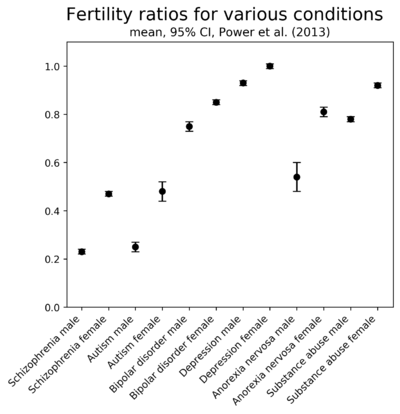
The fertility ratio is the ratio of the number of offspring each group produced compared to healthy people.
A study in 2013 examining a total of 2.3 million individuals born in Sweden in 1950-1970, using government health care records, found evidence for substantially lower fertility among sufferers of various mental illnesses. The fertility of the mentally ill was computed by measuring the fertility ratio (e.g., a FR of .5 would mean that the diseased group had on average half of the children of the general non-affected population, a FR of 2 would mean double the offspring on average). This ratio reflected the mean number of children that individuals with various mental disorders had, as compared to control individuals of the same age and sex, also accounting for variables such as family size, affected status and parental status. The youngest individuals involved were 40 years old, and had thus likely largely completed their reproductive careers.
The researchers found evidence of substantially intense selection pressure against autism with a male FR of .25 vs a female FR of .48. Since there is evidence that female autism is underdiagnosed due to the condition being stereotyped as male, it is even conceivable that many milder cases of autism in females go unnoticed, who presumably have higher reproductive success. This should imply that these figures only give us a lower bound on the sex difference in how male autists are comparatively disadvantaged. Even though the low FR should not surprise provided this sample contains low functioning individuals, the stark sex difference may serve as soft evidence that women have an easier time finding a partner (albeit these data do not rule out the possibility that most female autists get pump & dumped i.e. their much higher FR may not be indicative of a much higher quality sex life).
A clinical cohort study of adults recently diagnosed with Asperger's Syndrome (N = 374, 256 men, 116 women) in 2014 found a much greater prevalence of suicidal ideation and attempts/plans for suicide among adults with Asperger's as compared to the general population. Specifically, adults with Asperger's syndrome are much more likely to report lifetime experience of suicidal ideation than were individuals from a general UK population sample (odds ratio 9.6), and 35% of respondents reported having planned their suicide.
Providing some evidentiary support for those that argue that autism is not necessarily a deficit in and of itself, there is research that suggests much of the dire social, employment and relationship outcomes autists often face may be substantially due to acts of discrimination and ostracism committed against them by NTs.
For example, Beutal et al. found that commonly stated autistic deficits in social cognitive functioning only played a relatively minor role in mediating poor social and economic outcomes, calling into question the importance of the 'established' psychological deficits of autists (such as lack of theory of mind, a prerequisite for empathy).
Related to this, Morrison et al. (2019) also found that, after three prearranged, unscripted 5-minute dyadic interactions between three dyads consisting of two autistics, two TDs (typically developing) or an autist and a TD dyad, only TD individuals desired to shun autists in subsequent interactions. This was despite both autistic and TD individuals both tending to evaluate autistic conversation partners as more awkward and less attractive.
This study suggests that much of the problems autistics face in social interactions may simply be due to difference in communication styles (especially non-verbal communication), shared interests and presentation styles vs neurotypical interaction partners, as the quality of the conversations were evaluated by TD subjects as being equally high in both groups.
Some research on college dorm-mates evaluated for their level of autistic traits has also found that those similar levels of aloofness (associated with the broader autism phenotype) tended to like each other more, with discordant warm and aloof combinations generally resulting in more interpersonal strife.
This suggests that autists may generally get on reasonably well with each other, but differences in presentation style, flatter affect, and difficulty expressing expected dominant or submissive social dominance hierarchy based behaviors may cause even very high-functioning autists to be commonly be perceived as 'creepy', 'weird' or, more charitably, eccentric, leading to social exclusion and thus the social deficits the condition is known for.
The complementary imprinted brain theory puts psychotic spectrum disorders (such as schizophrenia) on the opposite end of a spectrum from ASD, purportedly resulting from a conflict in the genomic imprinting between paternal and maternal genes, with extreme genomic imprinting in favor of paternal genes being associated with ASD. This also corresponds with sex differences in empathizing vs systematizing which find females are generally higher in empathizing and males highest in systematizing. Autistic individuals of both sexes typically display a more masculinized behavioral phenotype in terms of systematizing/empathizing. These developmental theories are not necessarily mutually exclusive with the theories of ASD that attribute the etiology of the disorder to greater
Iossifov et al. (2015) found that 30% of cases of autism in simplex families (where only one immediate family member has the condition) arises from de novo" (novel) mutations, often transmitted from the mother. Taylor et al. found that simplex cases of autism were typically more problematic as compared to multiplex cases (multiple family members affected). Advanced parental age at birth also heightens the risk of ASD in offspring, with a possible mediating role of greater paternal age heightening the incidence of de novo" mutations leading to ASD in offspring. Some researchers have claimed that the lessened prevalence of autism in women, rather than being explicable by the extreme male brain theory, may be due to greater levels of mutational load possibly being required for the disorder to be symptomatic in females. This theory also implies that females who have the condition may exhibit more severe symptoms due to carrying more deleterious mutations than males with the condition. However, it is also claimed that the lesser female prevalence of the disorder may be due to higher-functioning female autists being more effective at 'masking' the socially disruptive symptoms of the condition.
One theory suggests ASD represents a 'failed' instance of male mating strategies that can be seen in exaggerated forms in two somewhat similar disorders: ADHD (Attention Deficit Hyperactivity Disorder) and ASPD (Anti-Social Personality Disorder, commonly known as 'psychopathy'). All three disorders have low empathy in common. ADHD and ASPD, in particular, have a low arousal threshold (less or no fear, desire for extreme stimulation, very low inhibition) in common. Low empathy and arousal thresholds (i.e. higher activity levels) are likely adaptive in males, as they facilitate gaining dominance status and therefore access to women. ASD males, do have low empathy, so they are hyper-masculine in that regard, but they have a "high" arousal threshold as they easily get overstimulated and then withdraw from dominance competitions. This may, in part, explain, the poor reproductive success of autists.
In a similar vein, Overskied (2016) argued that many powerful politicians throughout recent history, such as the German Chancellor Angela Merkel, former US president Lyndon B Johnson, and the former South African president Nelson Mandela, among many others, exhibited significant subclinical autistic traits, and argued increase in male reproductive success associated with this status could explain some of the apparent increase in the prevalence of ASD in recent times. Overskied attempted to explain the discrepancy in the diagnosis of the disorder by sex by noting the reproductive success associated with high status is typically only found in men, with women's high status decreasing their reproductive success. He claims these subclinical autistic behaviors shared a common cause with actual autism, prenatal exposure, per Baron-Cohen's extreme male brain theory. He also stated that the high cortisol levels often found in autistics may serve to inhibit the expression of such socially dominant behaviors in them, whereas the powerful figures he claimed exhibited sub-clinical autistic traits may not be subject to such high cortisol levels.
Other theorists have examined autism through a life history framework, claiming that autism represents an extreme slow reproductive strategy (later age of reproduction, slower growth, focus on acquiring resources instead of early reproduction, and so on), with autistic traits perhaps being associated with the acquisition of specialized skills that may have served to enhance the eventual reproductive success of individuals that bore these traits in human's ancestral past. Some research has indeed indicated that autistic traits are associated with other traits that reflect a slow life history strategy, while schizotypic traits were found to reflect a fast life history strategy. For example, Jobe & White (2007) found that autists tend to have longer relationships than neurotypicals (although shorter friendships). There is, however, a general agreement that low-functioning autism is maladaptive.
The authors hypothesize that those with ASD have a more androgynous physical appearance but more male brains in regards to systematizing/empathizing. However, their findings are directly contradicted by another study using a similar methodology, which found that pre-pubescent children with ASD were more facially masculine and that those with more severe symptoms tended towards being the most masculinized, utilizing 3D face tracking software.
One of the explanations given by the authors of the newer study is that the first study examined adults, while theirs studied children. Social victimization and exclusion suffered by many autists results in higher levels of cortisol and the subsequent lowering of testosterone that results from high cortisol levels, leads to a higher Cortisol/T ratio, possibly producing an incomplete level of masculinization of the face and body during puberty. Other explanations for this discrepancy the authors of the series of studies pointed to were possible methodological errors in the first study. Since autism is not a single concrete disorder and set of universal symptoms but a 'spectrum' of behaviors and neurological differences, there is the possibility that the autists higher in social deficits are the more masculinized ones. In contrast, those higher in systematizing and obsessive interests are not.
There is also evidence that those with ASD have less symmetrical faces than neurotypicals. A lack of bodily symmetry is weakly linked to a higher level of mutational load. For instance, a study in published in 2010 found evidence of "significant facial asymmetry" in boys with ASD, particularly in the supra and periorbital regions in front of the frontal pole of the right hemisphere of the brain. This could be caused by differences in brain growth or/and genetic factors since the mothers of those with ASD generally exhibited similar facial asymmetry. This could result in those with ASD being, on average, less attractive as compared to NTs, due to facial symmetry being generally found to be a component of facial beauty.
Per the blackpill there is also some evidence that the social difficulties that those with ASD face do not only originate with the sufferer's social deficits but perhaps are substantially due to the negative perceptions of them by others. An article in the scientific journal Nature presented a series of studies that demonstrated that when shown photos and clips of social interactions(filmed via a first-person perspective with a go pro camera) of a group of ASD versus neurotypical individuals. ASD individuals were as a group perceived as significantly less attractive, dominant, likable, and fun to 'hang-out' with. They were, however, perceived as roughly equally 'trustworthy', 'smart', and 'good to live near' compared to NT controls. Their findings also demonstrated that the "negative first impressions of adults with ASD occurred only when audio and/or visual information was present, and not when the transcript of their speech content was evaluated. This discrepancy suggests that social presentation style rather than the substantive content of social speech drove negative impression formation of individuals with ASD."
Regarding the behavior profiles typical of those with ASD, a study published in 2014 using a modified version of the Bem Sex Role Inventory found those with ASD generally exhibited a more androgynous gender personality profile. This was mainly due to individuals with ASD reporting less competitive drive, poorer leadership abilities, and lower assertiveness. However, women with ASD reported a greater masculinized gender identity, and two-thirds stated they were tomboys in childhood vs one-third of control women.
Another study in 2010 found that those with ASD were 10 times more likely to be referred to a gender identity clinic than those in the general population. The findings of this study poses a problem to the extreme male brain theory of autism because both sexes were equally likely to exhibit gender dysphoria. Whereas one would expect females to be dysphoric than males if the extreme male brain theory was valid. However, the authors state that this form of gender dysphoria may be atypical, and is possibly related to the obsessional interests often found in those in ASD.
It was also found that, contrary to the majority of typically developing individuals with gender dysphoria, those in the study who exhibited both gender dysphoria and ASD were not attracted to their natal sex, but were attracted to individuals of the opposite birth sex. This may also be explained by the Trans-vestigiality hypothesis, i.e., the idea that the social exclusion and sexual frustration often experienced by autistic males, in particular, may contribute to them 'transitioning' to female gender identity to gain access to women, via the evasion of direct competition with other males. They possibly also romantically benefit from the social cachét that progressive circles often confer upon transsexuals.
Some have also suggested that this much greater prevalence of gender dysphoria among autistics may be simply due to the higher rate of sexual paraphilias among autistics. One of the primary causes of gender dysphoria is autogynephilia, or being sexually aroused by the thought of oneself being a woman.


The following symptoms are considered autistic. Health professionals tend to distance themselves from categorising someone as autistic due to the complexity of this condition. Rather, they use a list of autistic behaviors whose importance vary depending on their classification and severity; they then put the person on the autistic spectrum depending on the severity or number of said behaviors to classify the person as more or less autistic. This list is not exhaustive, and not all people diagnosed autistic have all those traits.

Interested in you.

Not interested in you.
People with Asperger's often experience difficulty socializing and blending in with normies, apparently due to being bad with emotional recognition and expression, the condition sometimes being co-morbid or conflated with prosopagnosia (face-blindness).
On the other hand, they are often exceptionally good at recognizing patterns and investigating specific topics with intense focus (hyperfocus). People with ASD are also vulnerable targets of PUA who scam them into buying into their ineffective programs, with Aspies being particularly susceptible tothe ‘attraction ambiguity problem’.
Origin of the term
The condition is named after Hans Asperger, an Austrian pediatrician who first described the disorder in a medical context, dubbing the condition "autistic psychopathy" (in German the word "psychopathisch" was often used to refer to any type of mental illness). Asperger is now a highly controversial figure due to revelations he contributed to the Nazi Aktion T4' euthanasia' program, with Asperger sending several of his child patients off to be killed. Given this controversial legacy, the recent discovery of his role in the T4 program may have also been a factor in the redefinition of the disorder by the APA.However, he did defend autistics (such as many of his patients) that exhibited intellectual talent, claiming it would be "best service" to the "Volksgemeinschaft" (organic racial community of the nation) if the state would integrate autists that into work and social life.
Autism and sexual success
69% of high functioning autistic adolescents want relationships, but almost none succeed
The parents of 190 adolescents with high and low functioning autism were surveyed by researchers to evaluate the adolescents' perspectives regarding sexuality.The adolescents upon whom parents were reporting were predominantly Caucasian (89.3%) males (86.8%) with a median age of 14 years (M = 14.51, SD = 1.96).
Findings were:
- 69.2% of adolescents with high functioning autism expressed the desire for a dating relationship.
- 73.1% with high functioning autism expressed attraction to someone of the opposite sex, and 10.0% to the same sex.
- However, only 7.7% of this high functioning autistic cohort reported having had a relationship with someone of the opposite sex, and 1.5% with someone of the same sex.
- Only 1.5% of the group had sex.
44.6% of high functioning adult autistic men remain virgins, despite high sex/relationship drive
A group of high functioning autistic men and women were evaluated and compared with healthy controls to assess their sexual and relationship desires and capability to achieve those desires.44.6% of autistic men were found to be virgins among a sample, with the average age being 35.7 years. (Note: This figure is likely understating the number of ASD men who are incel, as there are a disproportionately higher number of homosexual/bisexual men with ASD compared to NTs. The researchers lumped these men into a single group.)
Autistic men were found to masturbate more and have a greater desire for a relationship than normal men. So their perpetual virginity couldn't be attributed to a lack of interest in sex. However, despite their strong desire for sexual relationships, only 16% of autistic men were in such a relationship, while 82% of NT men were in a relationship. Thus, NT men were 5x more likely to be in a relationship than their autistic counterparts.
Autism did not so greatly reduce women's ability to find relationships with men, as 46% of women were able to have relationships, while only 16% of men were. The Researchers noted that Female ASD individuals were significantly younger at the time of first sexual intercourse (than males with ASD).
This may be due to autism reducing an individual's capacity for emotional interaction. However, normal men also crave emotional interaction less than normal women, so this will disproportionately impair an autistic man's attempts to find a relationship vs. an autistic woman's. Another possible explanation is that autists, due to their atypical behavior and emotional recognition deficits, find it difficult to navigate complex social dominance hierarchies, and are also socially excluded because of these atypical behaviors. Due to women's preference for male status and the fact that men are expected to take the dominant, initiating role in sexual relationships, this would be expected to affect autistic men more than autistic women.
The researchers also discovered that autistic men were burdened with a dramatically higher number of paraphilias, which are considered socially taboo. These paraphilias, which appear to be part of their condition, likely compound their difficulties in finding sexual and romantic success.
Quotes:
- Male ASD participants reported more frequent masturbation
- ASD men reported a greater sexual desire for sexual intercourse than their HC counterparts (P<0.05, Table III). "
- Of the individuals with ASD, significantly more women (n=18; 46.2%) than men (n=9; 16.1%) were currently in a relationship
Male autists reproduce half as often as female autists or less

The fertility ratio is the ratio of the number of offspring each group produced compared to healthy people.
A study in 2013 examining a total of 2.3 million individuals born in Sweden in 1950-1970, using government health care records, found evidence for substantially lower fertility among sufferers of various mental illnesses. The fertility of the mentally ill was computed by measuring the fertility ratio (e.g., a FR of .5 would mean that the diseased group had on average half of the children of the general non-affected population, a FR of 2 would mean double the offspring on average). This ratio reflected the mean number of children that individuals with various mental disorders had, as compared to control individuals of the same age and sex, also accounting for variables such as family size, affected status and parental status. The youngest individuals involved were 40 years old, and had thus likely largely completed their reproductive careers.
The researchers found evidence of substantially intense selection pressure against autism with a male FR of .25 vs a female FR of .48. Since there is evidence that female autism is underdiagnosed due to the condition being stereotyped as male, it is even conceivable that many milder cases of autism in females go unnoticed, who presumably have higher reproductive success. This should imply that these figures only give us a lower bound on the sex difference in how male autists are comparatively disadvantaged. Even though the low FR should not surprise provided this sample contains low functioning individuals, the stark sex difference may serve as soft evidence that women have an easier time finding a partner (albeit these data do not rule out the possibility that most female autists get pump & dumped i.e. their much higher FR may not be indicative of a much higher quality sex life).
Autism and suicide
Numerous studies show the harms of autism are painful to those who bear them. Autistic individuals are subjected to at least 4-5x as much bullying as normal children. Autistic children report 28x more suicidal ideation or suicide attempts compared to normal children. Autistic adults report nearly 10 times as many suicidal thoughts. Overall, people with autism are 7.53 times more likely to die by suicide, those with high-functioning autism having a greater risk of committing suicide than the low functioning, being 9.36 times more likely to commit suicide.A clinical cohort study of adults recently diagnosed with Asperger's Syndrome (N = 374, 256 men, 116 women) in 2014 found a much greater prevalence of suicidal ideation and attempts/plans for suicide among adults with Asperger's as compared to the general population. Specifically, adults with Asperger's syndrome are much more likely to report lifetime experience of suicidal ideation than were individuals from a general UK population sample (odds ratio 9.6), and 35% of respondents reported having planned their suicide.
Neurodiversity vs. autism as a pathology
There is a debate in the autism community as to whether or not high-functioning autism, in particular, should be treated as a health problem or not. The "Neurodivergent" or "neurodiversity" crowd maintain the label is stigmatizing. Some even imply that autism is neutral, good or even adaptive at least in mild cases of autism (i.e. that it is an evolved trait that increased reproductive success under certain conditions). Those opposed to the "neurodivergent" and "neurodiversity" movements claim that these movements downplay the behavioral and social issues often found in those diagnosed with Autism Spectrum Disorders.Providing some evidentiary support for those that argue that autism is not necessarily a deficit in and of itself, there is research that suggests much of the dire social, employment and relationship outcomes autists often face may be substantially due to acts of discrimination and ostracism committed against them by NTs.
For example, Beutal et al. found that commonly stated autistic deficits in social cognitive functioning only played a relatively minor role in mediating poor social and economic outcomes, calling into question the importance of the 'established' psychological deficits of autists (such as lack of theory of mind, a prerequisite for empathy).
Related to this, Morrison et al. (2019) also found that, after three prearranged, unscripted 5-minute dyadic interactions between three dyads consisting of two autistics, two TDs (typically developing) or an autist and a TD dyad, only TD individuals desired to shun autists in subsequent interactions. This was despite both autistic and TD individuals both tending to evaluate autistic conversation partners as more awkward and less attractive.
This study suggests that much of the problems autistics face in social interactions may simply be due to difference in communication styles (especially non-verbal communication), shared interests and presentation styles vs neurotypical interaction partners, as the quality of the conversations were evaluated by TD subjects as being equally high in both groups.
Some research on college dorm-mates evaluated for their level of autistic traits has also found that those similar levels of aloofness (associated with the broader autism phenotype) tended to like each other more, with discordant warm and aloof combinations generally resulting in more interpersonal strife.
This suggests that autists may generally get on reasonably well with each other, but differences in presentation style, flatter affect, and difficulty expressing expected dominant or submissive social dominance hierarchy based behaviors may cause even very high-functioning autists to be commonly be perceived as 'creepy', 'weird' or, more charitably, eccentric, leading to social exclusion and thus the social deficits the condition is known for.
Extreme male brain theory
A major controversial theory of the etiology (cause) of ASD is known as the extreme male brain theory. The theory, first proposed by the world-famous autism researcher from the University of Cambridge, Simon Baron-Cohen, states that the primary cause of ASD is excessive exposure to androgens (male sex hormones) during prenatal development. Baron-Cohen does not claim that persons with ASD are more 'masculine' than neurotypicals, a point often lost on laymen. Baron-Cohen merely asserts that this 'extreme' masculinity takes form in a deficit of empathy in ASD individuals, as well as an increase in their mental tendency to attempt to systematize information they receive from the external environment. He states this is a major cause of the obsessional interests and social deficits displayed by those with the disorder. Baron-Cohen found support for his theory via analysis of the amniotic fluid of children who were later diagnosed with ASD, which found evidence of elevated androgens (androstenedione and testosterone) in the placental fluid. However, the relationship between these factors is likely complex, as later studies have also found evidence of elevated levels of estrogens in the prenatal environment of those later diagnosed with autism. This is likely partially due to the activity of the enzyme aromatose in the placenta, converting some of the androgens to estrogens, as there is animal evidence that prenatal estrogens can have a "paradoxical" masculinizing effect in the right context.The complementary imprinted brain theory puts psychotic spectrum disorders (such as schizophrenia) on the opposite end of a spectrum from ASD, purportedly resulting from a conflict in the genomic imprinting between paternal and maternal genes, with extreme genomic imprinting in favor of paternal genes being associated with ASD. This also corresponds with sex differences in empathizing vs systematizing which find females are generally higher in empathizing and males highest in systematizing. Autistic individuals of both sexes typically display a more masculinized behavioral phenotype in terms of systematizing/empathizing. These developmental theories are not necessarily mutually exclusive with the theories of ASD that attribute the etiology of the disorder to greater
Advanced parental age and mutational load
There is some evidence that increasing deleterious mutational load in the population, mediated by advanced paternal age and also possibly by reductions in natural selection due to industrialization and modern medicine, is contributing to the increase in global autism diagnoses. This secular increase in autism diagnoses is likely not be entirely explicable by the broadening of the diagnostic criteria of autism or increased awareness of the issue.Iossifov et al. (2015) found that 30% of cases of autism in simplex families (where only one immediate family member has the condition) arises from de novo" (novel) mutations, often transmitted from the mother. Taylor et al. found that simplex cases of autism were typically more problematic as compared to multiplex cases (multiple family members affected). Advanced parental age at birth also heightens the risk of ASD in offspring, with a possible mediating role of greater paternal age heightening the incidence of de novo" mutations leading to ASD in offspring. Some researchers have claimed that the lessened prevalence of autism in women, rather than being explicable by the extreme male brain theory, may be due to greater levels of mutational load possibly being required for the disorder to be symptomatic in females. This theory also implies that females who have the condition may exhibit more severe symptoms due to carrying more deleterious mutations than males with the condition. However, it is also claimed that the lesser female prevalence of the disorder may be due to higher-functioning female autists being more effective at 'masking' the socially disruptive symptoms of the condition.
Evolutionary theories of autism
It could be that autism is primarily a result of impaired brain regions that generally mediate social behavior. However, a number of theories have been proposed that aspects of autism could be adaptive, meaning that it or related behavior patterns may have increased reproductive success in the past.One theory suggests ASD represents a 'failed' instance of male mating strategies that can be seen in exaggerated forms in two somewhat similar disorders: ADHD (Attention Deficit Hyperactivity Disorder) and ASPD (Anti-Social Personality Disorder, commonly known as 'psychopathy'). All three disorders have low empathy in common. ADHD and ASPD, in particular, have a low arousal threshold (less or no fear, desire for extreme stimulation, very low inhibition) in common. Low empathy and arousal thresholds (i.e. higher activity levels) are likely adaptive in males, as they facilitate gaining dominance status and therefore access to women. ASD males, do have low empathy, so they are hyper-masculine in that regard, but they have a "high" arousal threshold as they easily get overstimulated and then withdraw from dominance competitions. This may, in part, explain, the poor reproductive success of autists.
In a similar vein, Overskied (2016) argued that many powerful politicians throughout recent history, such as the German Chancellor Angela Merkel, former US president Lyndon B Johnson, and the former South African president Nelson Mandela, among many others, exhibited significant subclinical autistic traits, and argued increase in male reproductive success associated with this status could explain some of the apparent increase in the prevalence of ASD in recent times. Overskied attempted to explain the discrepancy in the diagnosis of the disorder by sex by noting the reproductive success associated with high status is typically only found in men, with women's high status decreasing their reproductive success. He claims these subclinical autistic behaviors shared a common cause with actual autism, prenatal exposure, per Baron-Cohen's extreme male brain theory. He also stated that the high cortisol levels often found in autistics may serve to inhibit the expression of such socially dominant behaviors in them, whereas the powerful figures he claimed exhibited sub-clinical autistic traits may not be subject to such high cortisol levels.
Other theorists have examined autism through a life history framework, claiming that autism represents an extreme slow reproductive strategy (later age of reproduction, slower growth, focus on acquiring resources instead of early reproduction, and so on), with autistic traits perhaps being associated with the acquisition of specialized skills that may have served to enhance the eventual reproductive success of individuals that bore these traits in human's ancestral past. Some research has indeed indicated that autistic traits are associated with other traits that reflect a slow life history strategy, while schizotypic traits were found to reflect a fast life history strategy. For example, Jobe & White (2007) found that autists tend to have longer relationships than neurotypicals (although shorter friendships). There is, however, a general agreement that low-functioning autism is maladaptive.
Relationship between ASD, physical masculinity, and looks
In apparent contrast with the extreme male brain theory, there is some research indicating those (male and female) exhibit a greater amount of physical androgyny than NTs, possibly contributing to the higher incidence of inceldom among autists. A study in the Journal of Neurodevelopmental Disorders demonstrated that males with higher levels of 'autistic traits' were generally more physically feminine then males with lower levels of autistic traits and vice versa for females.The authors hypothesize that those with ASD have a more androgynous physical appearance but more male brains in regards to systematizing/empathizing. However, their findings are directly contradicted by another study using a similar methodology, which found that pre-pubescent children with ASD were more facially masculine and that those with more severe symptoms tended towards being the most masculinized, utilizing 3D face tracking software.
One of the explanations given by the authors of the newer study is that the first study examined adults, while theirs studied children. Social victimization and exclusion suffered by many autists results in higher levels of cortisol and the subsequent lowering of testosterone that results from high cortisol levels, leads to a higher Cortisol/T ratio, possibly producing an incomplete level of masculinization of the face and body during puberty. Other explanations for this discrepancy the authors of the series of studies pointed to were possible methodological errors in the first study. Since autism is not a single concrete disorder and set of universal symptoms but a 'spectrum' of behaviors and neurological differences, there is the possibility that the autists higher in social deficits are the more masculinized ones. In contrast, those higher in systematizing and obsessive interests are not.
There is also evidence that those with ASD have less symmetrical faces than neurotypicals. A lack of bodily symmetry is weakly linked to a higher level of mutational load. For instance, a study in published in 2010 found evidence of "significant facial asymmetry" in boys with ASD, particularly in the supra and periorbital regions in front of the frontal pole of the right hemisphere of the brain. This could be caused by differences in brain growth or/and genetic factors since the mothers of those with ASD generally exhibited similar facial asymmetry. This could result in those with ASD being, on average, less attractive as compared to NTs, due to facial symmetry being generally found to be a component of facial beauty.
Per the blackpill there is also some evidence that the social difficulties that those with ASD face do not only originate with the sufferer's social deficits but perhaps are substantially due to the negative perceptions of them by others. An article in the scientific journal Nature presented a series of studies that demonstrated that when shown photos and clips of social interactions(filmed via a first-person perspective with a go pro camera) of a group of ASD versus neurotypical individuals. ASD individuals were as a group perceived as significantly less attractive, dominant, likable, and fun to 'hang-out' with. They were, however, perceived as roughly equally 'trustworthy', 'smart', and 'good to live near' compared to NT controls. Their findings also demonstrated that the "negative first impressions of adults with ASD occurred only when audio and/or visual information was present, and not when the transcript of their speech content was evaluated. This discrepancy suggests that social presentation style rather than the substantive content of social speech drove negative impression formation of individuals with ASD."
Relationship between ASD and behavioral androgyny
In seeming contradiction to the "extreme male brain" theory of the etiology of ASD, there is also evidence that ASD is associated with behavioral androgyny in both sexes. However, as stated above, the theory does not claim that those with ASD are more "masculine" in the sense that accords with cultural/biological definitions of masculinity. This theory merely proposes that exposure to excessive levels of androgens in the prenatal environment is one of the main causes of the disorder, and this elevated androgen exposure is associated with traits that masculinize the brain of those with ASD in specific contexts, such as causing a lack of empathizing capabilities and a greater tendency toward systematizing (e.g., an extreme exaggeration of the general male tendency to be interested in "things" instead of "people").Regarding the behavior profiles typical of those with ASD, a study published in 2014 using a modified version of the Bem Sex Role Inventory found those with ASD generally exhibited a more androgynous gender personality profile. This was mainly due to individuals with ASD reporting less competitive drive, poorer leadership abilities, and lower assertiveness. However, women with ASD reported a greater masculinized gender identity, and two-thirds stated they were tomboys in childhood vs one-third of control women.
Another study in 2010 found that those with ASD were 10 times more likely to be referred to a gender identity clinic than those in the general population. The findings of this study poses a problem to the extreme male brain theory of autism because both sexes were equally likely to exhibit gender dysphoria. Whereas one would expect females to be dysphoric than males if the extreme male brain theory was valid. However, the authors state that this form of gender dysphoria may be atypical, and is possibly related to the obsessional interests often found in those in ASD.
It was also found that, contrary to the majority of typically developing individuals with gender dysphoria, those in the study who exhibited both gender dysphoria and ASD were not attracted to their natal sex, but were attracted to individuals of the opposite birth sex. This may also be explained by the Trans-vestigiality hypothesis, i.e., the idea that the social exclusion and sexual frustration often experienced by autistic males, in particular, may contribute to them 'transitioning' to female gender identity to gain access to women, via the evasion of direct competition with other males. They possibly also romantically benefit from the social cachét that progressive circles often confer upon transsexuals.
Some have also suggested that this much greater prevalence of gender dysphoria among autistics may be simply due to the higher rate of sexual paraphilias among autistics. One of the primary causes of gender dysphoria is autogynephilia, or being sexually aroused by the thought of oneself being a woman.
Women on aspies
Even though some Asperger's do manage to get into relationships, possibly due to some making good betabux, there is some anecdotal evidence that these relationships are often unstable, leading e.g., to some post-wall foid hating on her sperg ex-husband by writing an entire website on the ordeal titled "Heartless Aspergers". The author conducted a survey collecting opinions of 43 women on their sperg husbands, many of which have been affirmative. Here are a few quotes from said disgruntled wives (also good evidence of female solipsism:After 23 years of marriage to an AS husband who is a betabux and basically decent person, all I can say is "DON'T DO IT. Run, run, run as fast as you can. You may love this person, but unless you also despise yourself, you need to leave the relationship as far behind you as possible."
What do we do about aspie men? Do we just name and shame them on a website so other women can avoid? And what about the issue of being a man enough to confess you are an aspie, on the first or second date? Shouldn't that be mandatory? This is a psych condition that badly hurts women like me, after all. I think we have a right to know."
Aspergers men are a nightmare. I accidentally married someone with AS. And I stress ACCIDENTALLY, as I have seen the devastation that is "being" with one of these people. They should come with a warning and anyone displaying these behaviors should be tested in school so that us normal people don't get trapped in something that ruins our lives. Yeah they're all different yeah yeah, I know, some are worse than others. No one can be happy with these people. NO ONE. WHATSOEVER. Seriously. My life is devastated from one of these un-empathetic, desolate wasteland-of-emotions people. Learn to think like them? F*** that. That's impossible and would require losing most of the characteristics that make us human, that allow us to connect to others.

Fake nice guy syndrome
When women, as well as people in general, talk about fake nice guys they may be referring to autistic (or ugly) males. Autists may naturally overestimate the optimal amount of pro-social communication/behavior most people generally prefer. Overly formal or polite behavior, which is often found among autists, is counter to establishing dominance. Sexually, most women do tend to prefer assholes. Perhaps this is hard to understand for autistics, as they are claimed to be prone to black and white thinking.
Dating advice
There has been little research on what determines success among the few autistics who have it. One study developed three key tips for autistic online daters:- Be consistent in your online profile (attributes and interests).
- Be explicit about your autism.
- Frame your personality attributes and interests using positive wording
- Be real and true to yourself.
- "Further, similar to speed-dating studies with typical adults, participants matched from speed-dating events led to electronic communication between couples, and dates for approximately one-third of matches."
- "the content of participants' conversations felt formal to an outside observer."
Autistic traits
Contrarily to what some media claim, being autistic does not mean being very intelligent; intelligence and autism are two different things. If you are an incel, there is a possibility it is due to some autistic behaviors; the fact normies likes to claim they are autistic or have such or such mental illnesses to get some attention does not mean those mental conditions do not exist. Besides, you probably already know that you are not like the normies, that something is different with you and the falsely mentally ill posers.The following symptoms are considered autistic. Health professionals tend to distance themselves from categorising someone as autistic due to the complexity of this condition. Rather, they use a list of autistic behaviors whose importance vary depending on their classification and severity; they then put the person on the autistic spectrum depending on the severity or number of said behaviors to classify the person as more or less autistic. This list is not exhaustive, and not all people diagnosed autistic have all those traits.
Voice
- Talking to yourself orally, having debates in your head which sometimes result in you vocally speaking some parts of the debate, repeating in your head some future dialogues you may one day have which sometimes result in you speaking parts vocally; "argu[ing] alone at night"
- Often as a child, repeating words or expressions vocally just after someone pronounced them, this is called echolalia
- Word retrieval impairment
- Having a voice described by NTs as "monotone" or "depressive"
Mind
- Trouble understanding or inability to understand body language and non-verbal cues or indications
- Seeing the world in a black and white manner, with very few nuances
- A tendency to be clinically depressed
- Being physically and mentally tired - sometimes to the point of a meltdown -, and being sometimes anxious or suicidal, mainly due to having to live among NTs and act like them (camouflaging)
- Strongly disliking changes, being anxious if the routine has or could be changed
- Tendency to dislike lies and to want to openly correct people who you feel are lying or wrong
- Being "too honest" to the point of being rude
- Frequent synesthesia
- Being extremely invested in, or obssessed by some subjects or hobbies
- Difficulties remembering peoples' names, less problems remembering their face
- Face blindness (also called prosopagnosia)
Food and drugs
- For children, strong negative reaction to some food or odors (those children are seen a being "picky")
- Separating the foods in the plate, disliking when each different foods touch each others
- Aversion to strong tastes and textures along with "strong preferences for carbohydrates and processed foods, while rejecting fruits and vegetables. This, too, may reflect an aversion to strong tastes and textures. Unfortunately, it can lead to nutritional deficiencies and excessive weight gain, especially if exercise is limited."
- Using drugs or substances to cope with being among NTs
Appearance
- Caring more about how you feel in your clothes than how people will perceive them, keeping or wanting to keep the same clothes all the time even if it means freezing or sweating
Others
- Bad handwriting
- Being bad a teamwork
- Stimming (e.g. hand flapping, rocking, spinning self or objects, biting, head banging, moving eyes upwards or the side, making vocalisations)
- Fidgeting often
- Trouble making or maintaining eye-contact
- Sensory sensitivities heightened during menstruations
- Being prone to sensory overload
- Having intestinal constipation, or attention deficit hyperactivity disorder (ADHD), or speech problems, or anxiety
Treatments
There are currently no treatments for autism. However, in 2019 a gene-editing tool has cured autism among adolescent mice.Free lesson for Aspies
A guide to female cues for our wonderful, irreplaceable brethren with Aspergers...
Interested in you.

Not interested in you.
Last edited:





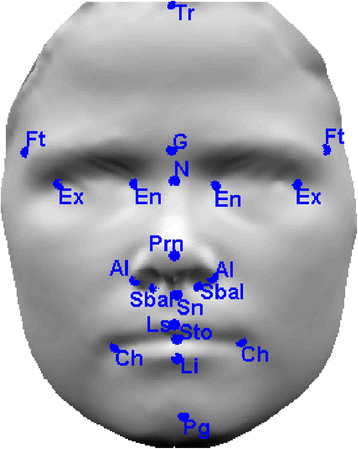
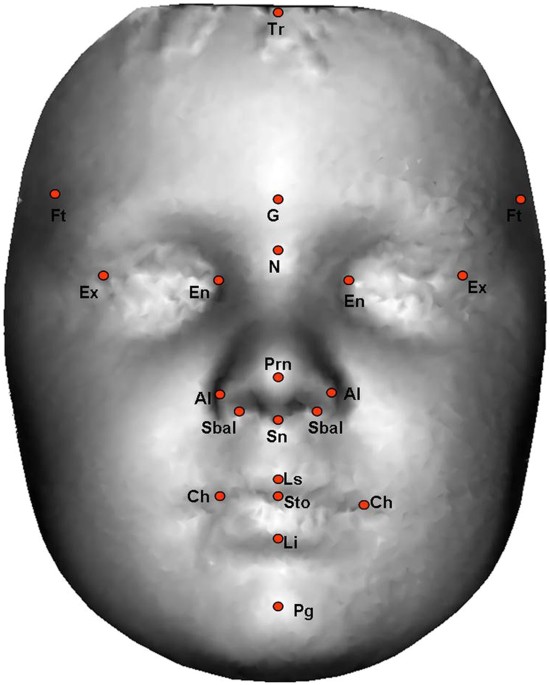

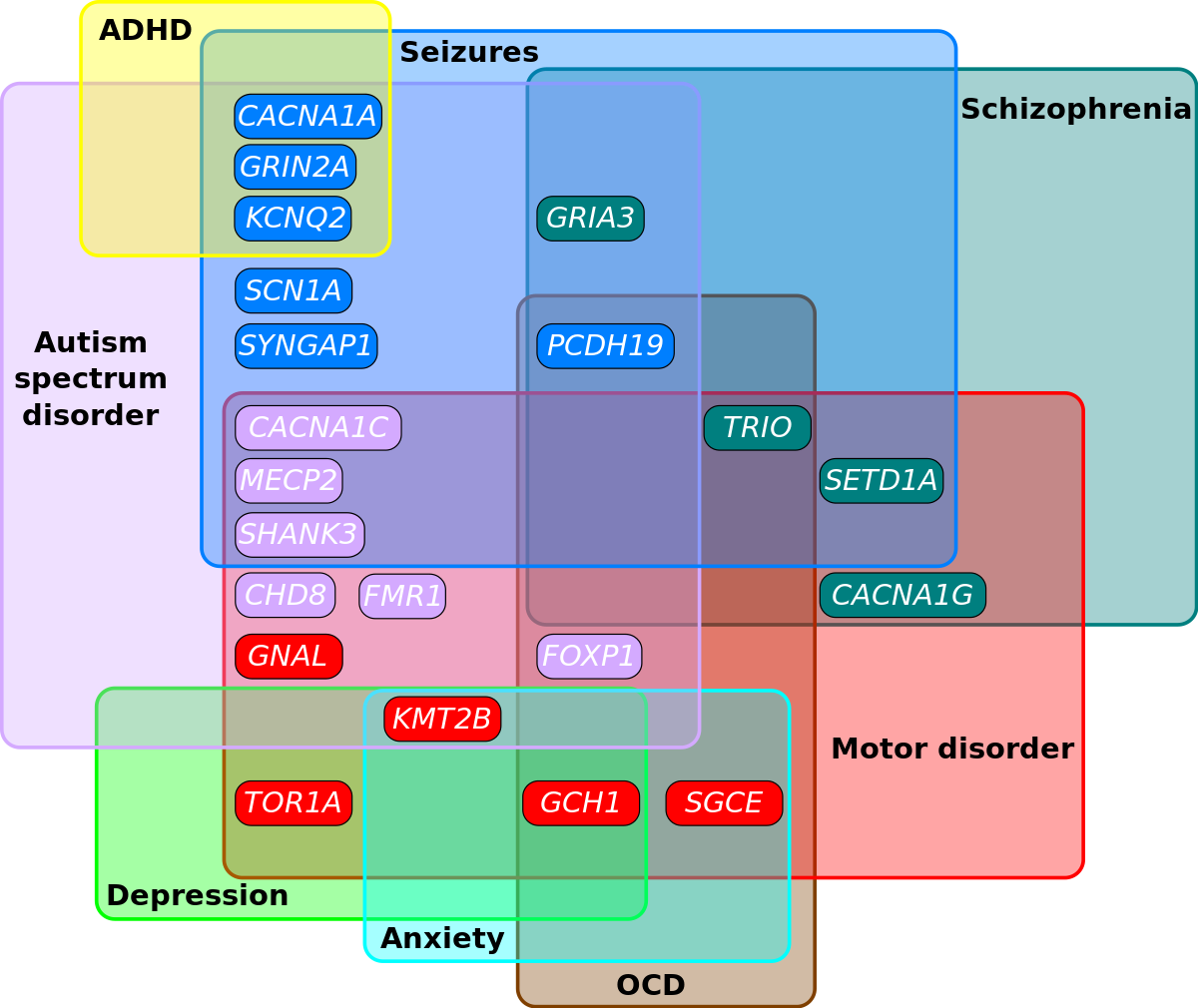
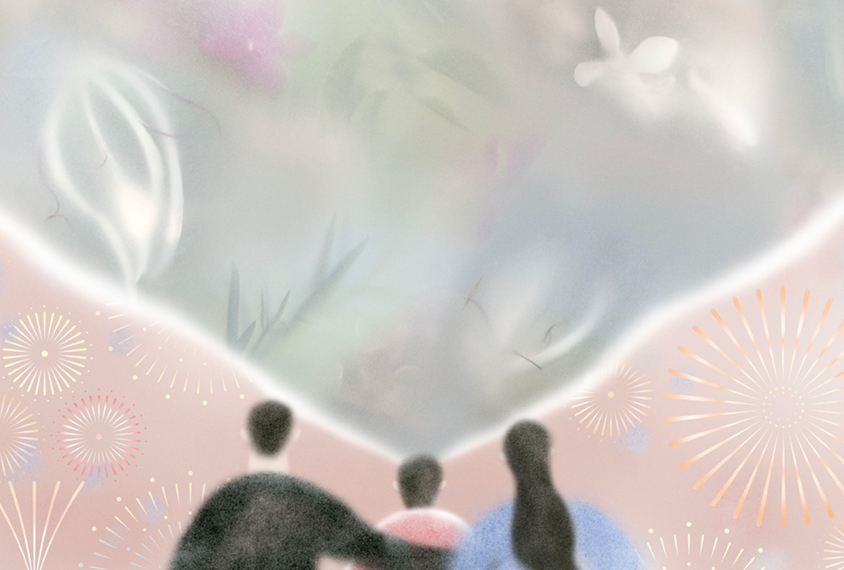

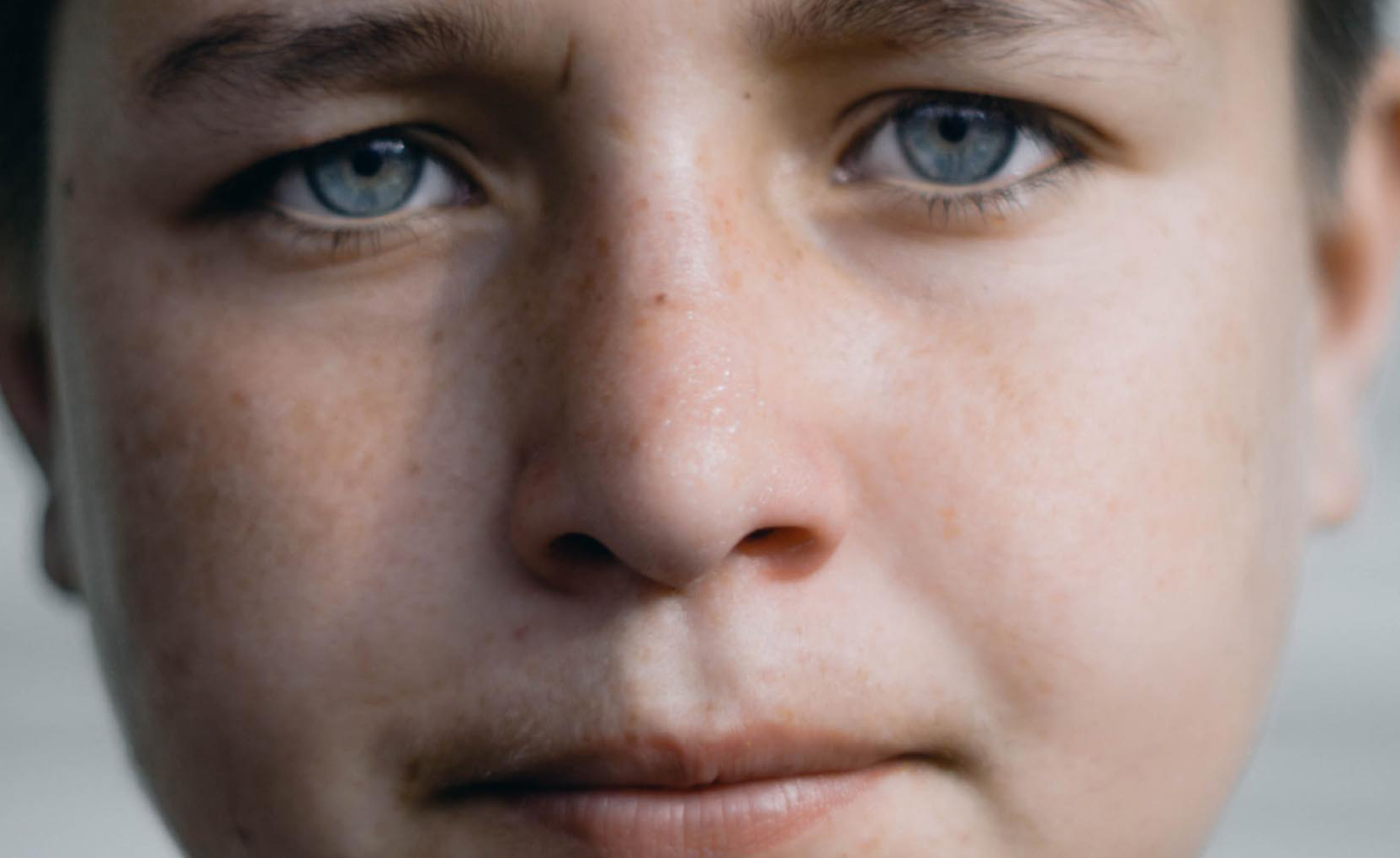

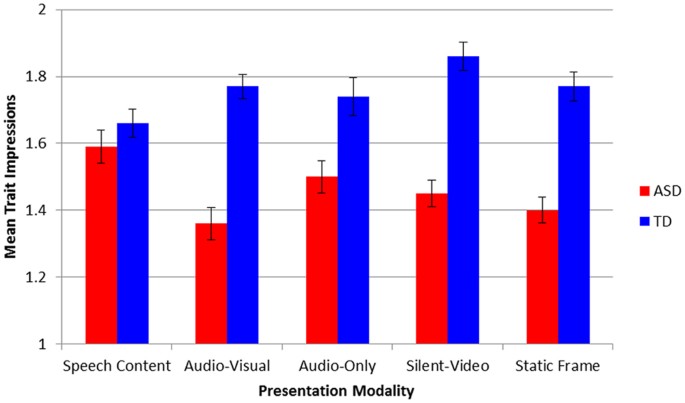




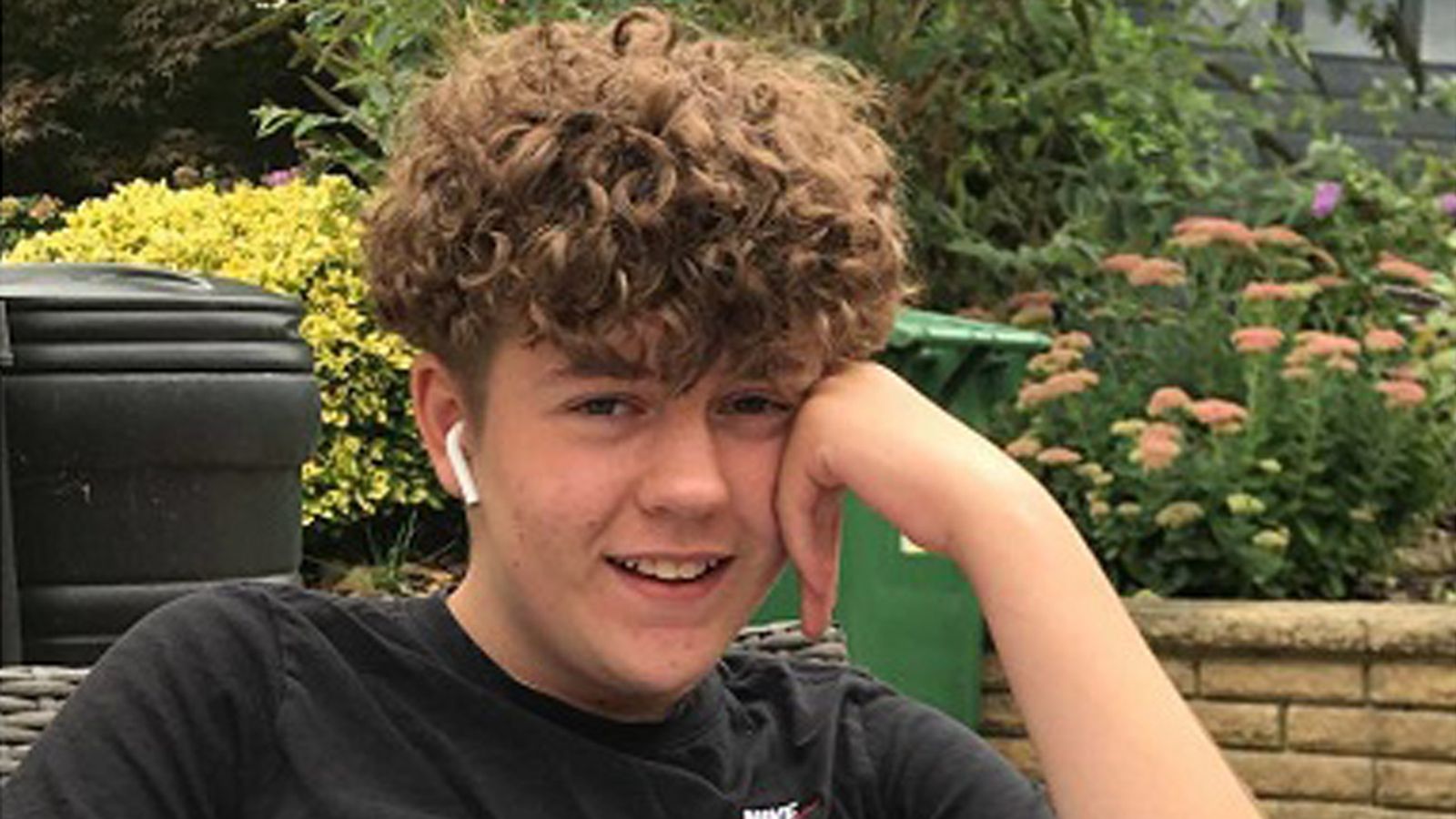
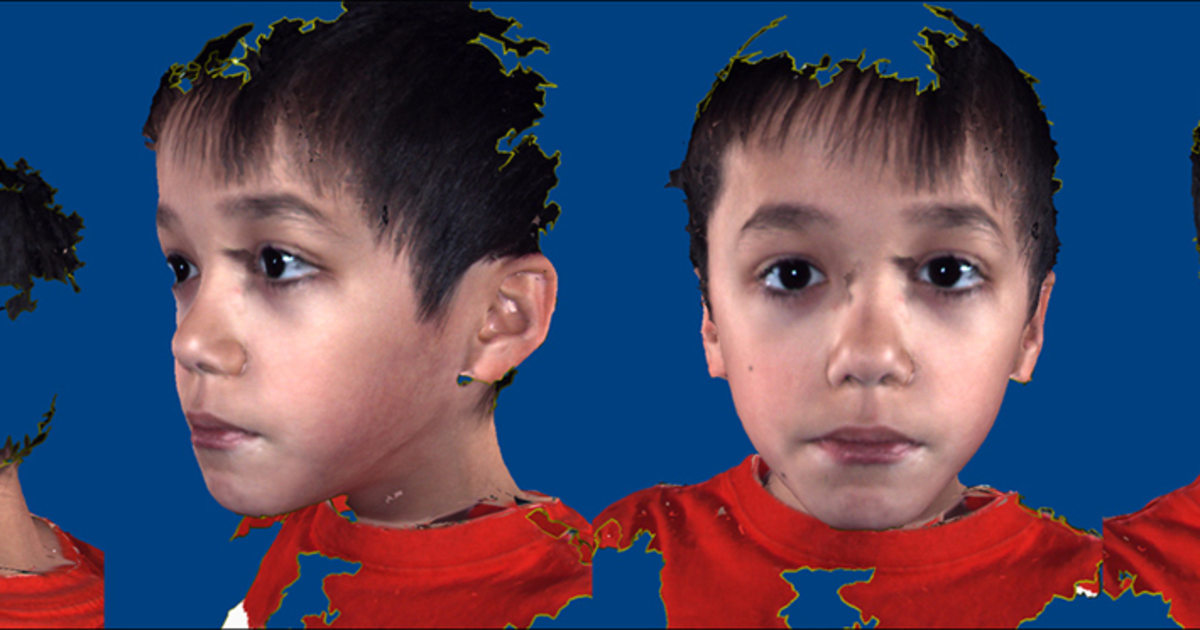
 no way you have Autism and do well with girls, never met one who did including myself I always flop and had to study game like a cuckhold to figure that gender out
no way you have Autism and do well with girls, never met one who did including myself I always flop and had to study game like a cuckhold to figure that gender out